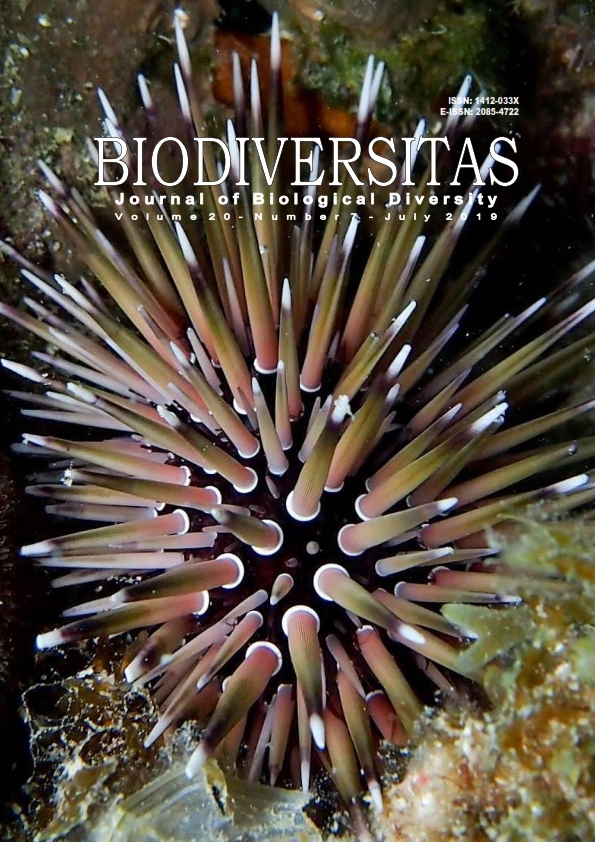The intertidal gastropods (Gastropoda: Mollusca) diversity and taxa distribution in Alas Purwo National Park, East Java, Indonesia
##plugins.themes.bootstrap3.article.main##
Abstract
Abstract. Susintowati, Puniawati N, Poedjirahajoe, Handayani NSN, Hadisusanto S. 2019. The intertidal gastropods (Gastropoda: Mollusca) diversity and taxa distribution in Alas Purwo National Park, East Java, Indonesia. Biodiversitas 20: 2016-2027. Gastropods play an essential role in the ecosystem and can be used as bioindicators of environmental pollution. Understanding of their behavior, habitat, and distribution, and how these factors evolve, is crucial. This paper aimed to describe the diversity of the gastropod community and their spatial taxa distribution, based on the specimen frequency across all observed samples, in the diverse environment of Alas Purwo National Park (APNP), East Java, Indonesia. We studied eight beaches and two mangroves areas, and the study areas of the intertidal zone divided into upper, middle, and lower zones towards the sea. The purposive sampling was used to determine the locations and multi-plot quadrats for observations. The diversity of gastropods was elucidated by using the Shannon and Simpson indexes, while the Morisita index was applied for analyzing their spatial distribution pattern. However, the correspondence analysis and principal component analysis were performed using the software of PAST 3.22 for describing the diversity profile and individual rarefaction of gastropods together with environmental quality. There were three beach types: rocky, sandy, and muddy beaches were found in APNP. The highest diversity index (H’) was found on Pancur beach: H’ = 3.271, D = 0.947 of 67 species. The spatial distribution pattern of gastropods species was weakly clumped to random, with Ip: 0.165 - 0.016. Gastropods, both predators and scavengers, were distributed from the upper to lower zones. The distribution of gastropods in APNP is mostly in type B. These results expand our knowledge of gastropods diversity and distribution of Indonesia’s beach and can contribute to the future environmental assessments of biodiversity of tropical intertidal zones worldwide.
